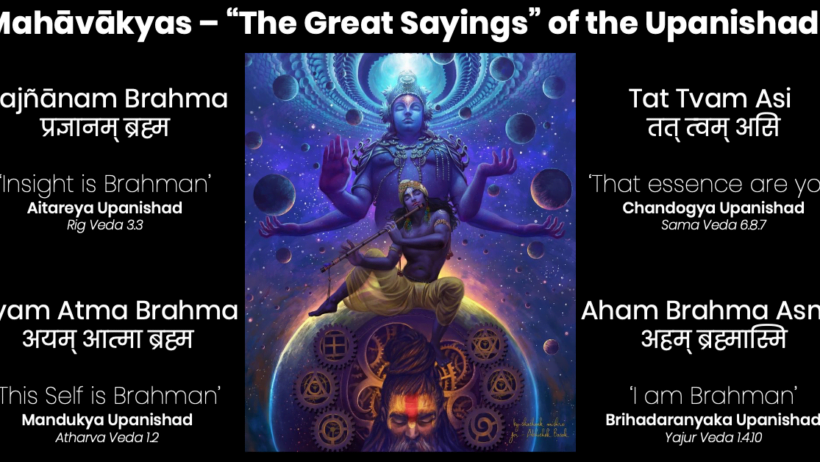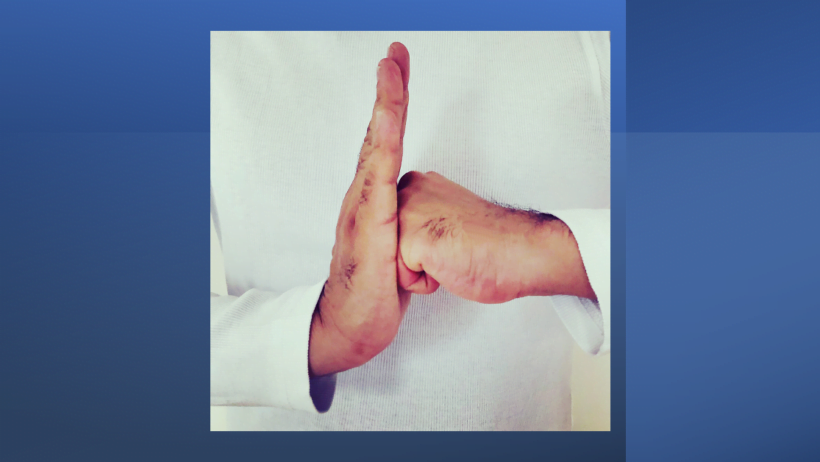Life is a seamless and intimate experience with many trials and tribulations. We often liken our lives to “a movie” or “a soap opera”, but unlike television or the cinema there is no demarcation in our lives in ‘the scenes’. Night blends seamlessly into the day with no apparent break between the two. Similarly, each moment of our lives blends seamlessly into every other moment.

Let us consider what our life experience consists of, really break it down experientially:
1. Thoughts and mental images.
Thoughts often take the form of a dialogue in one’s native tongue but usually take the form of mental images. Each appearance is discrete, short-lived and on its own incoherent. It is the intellect that makes sense of the constant stream of thoughts that arise.
2. Sensations of the body. Suppose one’s eyes are closed, and no reference made to a memory of a body. In that case, one experiences the body as just discrete sensations or vibrations. You can try this for yourself now. Without referencing memory, can you feel a discrete arm or leg or any body part with your eyes closed? Does it seem like you are just an amorphous mass of vibrations?
3. Perceptions of the world. Through the senses of sight, sound, smell, taste and touch.
There is nothing in the whole of the human experience outside of these three.

We are bombarded with literally millions of sensory stimuli from these three sources each second. We direct our attention to filter out the redundant sensory inputs through a process known as sensory gating. The pulvinar nucleus of the thalamus is considered the gatekeeper in the process of attention in preventing irrelevant sensory information from reaching the brain’s higher cortical centres.

Okay, I hope this helps in part to explain why when you are negotiating a crowd you are unaware of the feeling of hunger or when you are reading you may be oblivious to conversations going on around you, or how you are unaware of the smell in the room until now.
It also helps to explain the reason for much of the stresses that we experience in the world today. Two factors take us away from the present moment – which is inherently peaceful (from a psychological perspective).
1. Thoughts of the past. Often this is in the form of negative ‘commentary’ about past events, how you could have done things differently, interpretations and reinterpretations of situations. However, do not be fooled. Even positive thoughts about past events can lead to stress or misery through clinging, wanting to relive moments, and returning to a past that no longer exists.
2. Projections of future events. This projection leads to anxieties and a subtle ‘resistance’ that is sometimes felt in the body, usually the abdomen. This seeking of a future event often elongates one’s perception of time, making the day feel longer. A lot of time is lost ruminating over problems that do not have a solution (in that moment).

Unfortunately, attention is a subject poorly taught at school; it seems intuitive that we all have it and know how to use it (with certain clinical exceptions). Still, variation in attention is present in the general population, and fortunately can also be refined.
Meditation is the focussing and training of attention. The object of ones focus is usually the breath. Still, when your attention is one-pointed, anything (including visualisations and mantras) can be an anchor. Meditation helps one recognise the thoughts that continuously arise, and create a space between the thoughts and the thinker. In the early stages of meditation, the practitioner often gets lost in thought and often for long periods, but returning to the anchor reinforces the focus. It is thought to be responsible for brain density changes that have been seen in studies worldwide following as little as six weeks of daily meditation practice.

Through teaching meditation, I have realised that this is not a practice that suits everyone or that everyone wants to do, nor can it be forced. I have also learned many principles through meditation that can be applied to those who don’t want to take up a daily practice but need a respite from the constant commentary. Two simple techniques are described below.
1. Conscious breathing. All 7.6 billion of us breathe, but how often are we conscious of our breathing? Inspired by mindfulness meditation, conscious breathing is becoming recognised in the mainstream through smartphone apps and wearable devices that prompt the user to breathe at regular intervals.
The principle is straightforward. Anything that stops the constant stream of thoughts weakens their hold over us and weakens our identification with them.
For breathing to be conscious, you need to stop what you are doing and pay close attention to at least six breaths. Observe how it feels in your nose, throat, chest, and abdomen: the sound and the variation between the breaths. When you stop observe the peace – it may be short-lived, but it is enough to weaken our bond to thoughts. The changes can be so subtle as to be imperceptible. But practised regularly; this technique requires no financial investment and only a minuscule amount of time is a game-changer for many.
2. Returning to present moment awareness. We are aware 100% of our waking lives but how often are we aware that we are aware. Awareness of awareness is considered in many traditions to be the highest meditation. However, many are deceived by this statement because of its simplicity.
How do we practice this? The process is outlined below.
You ask yourself the question ‘Am I aware?’. The mind answers ‘Yes’. Both the question and the answer are thoughts arising in one’s mind. Still, something happens in between the two – attention goes directly to the experience of being aware.
Now ask the question again, recognise the experience of being aware – this is the same as the feeling of being, the sense of existence. This is what we refer to when we say the word ‘I’. Instead of letting the mind answer this time, stay with the experience of being aware.
This technique known as ‘Atma Vichara’ or self abidance has been well described in Hindu literature. But it is often referred to in other traditions such as Christian contemplative prayer.
Do not make the mistake of expecting changes to happen immediately or have any expectations of the nature of these changes. It may be friends or loved ones who first notice the changes in you, which is a good pointer. Still, the most significant barometer to our progress is the inherent sense of peace which is less and less easily disturbed.
Article by Vikas Pandey
Vikas Pandey is a consultant surgeon in the UK National Health Service and teaches meditation with Pandey Integrated Healthcare.


